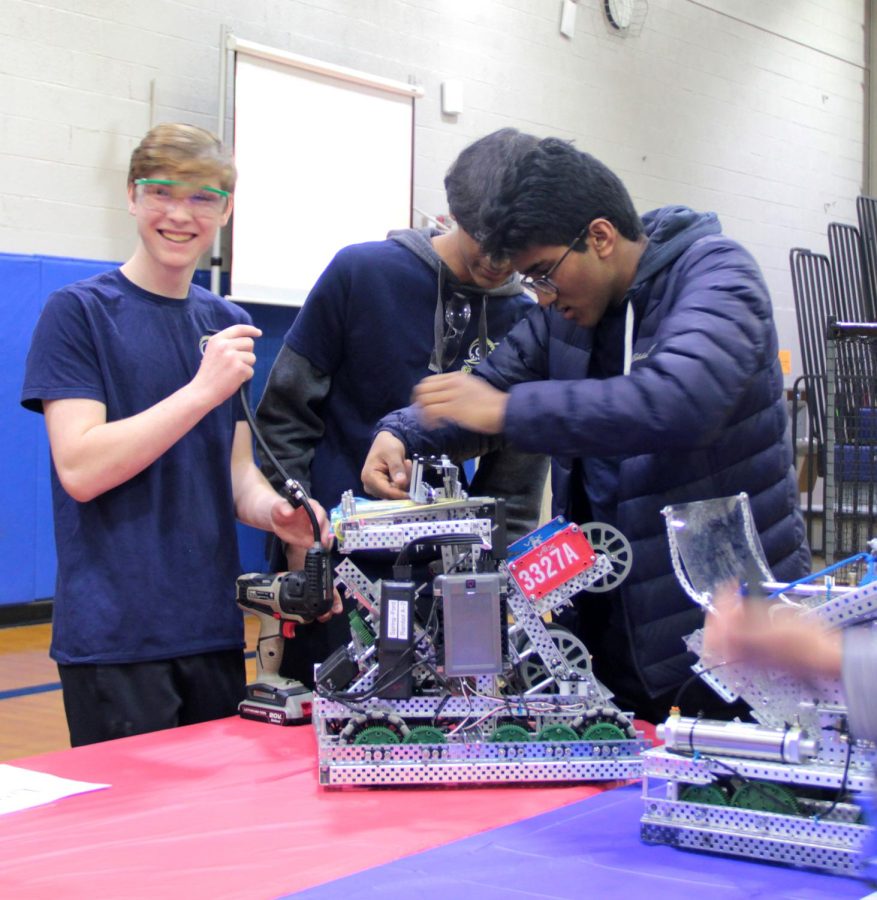Engineering Fun
Spring-Ford students host Vex Robotics competition
Spring-Ford students (from left) Joe Vanisko, Sai Shettar, and Sumit Laha prepare for the 2023 Vex Robotics Competition at the Ninth-Grade Center.
May 11, 2023
I helped volunteer at the Vex Robotics competition in February, as my friend and I had volunteered last year and had a lot of fun. There was a hustle and bustle as all the teams from nearby schools prepared to compete with their robots.
The Ninth-Grade Center cafeteria was a designated area for all the teams to work on their robots. Walking through the cafeteria, people were running around with wrenches, screwdrivers, and robot parts in hand.
The fields in which the robots would compete were set up in the gym. Each one contained 60 plastic discs, two goals on opposing sides, and 4 rollers on the perimeters of the fields. The game’s object was for the robot from each team, or alliance, to turn the rollers to their team’s color and shoot discs into their team’s goal.
The competition was about to begin, and alliances began to file into the gym. The gym was packed with spectators on the bleachers, referees, volunteers, nervous alliances, and of course, the robots. When the games begun, the alliances went to their assigned field, put their robots down, and competed.
The first 15 seconds were known as an “Autonomous Period,” in which the drivers could not control the robot, and the next 1 minute and 45 seconds was the “Driver Controlled Period.”
Teams intensely followed their robots and cheered on teammates controlling the robots. After the round was over, each team had the opportunity to make their robot cover as many square areas on the field as possible to get a chance to win extra points. Some teams’ robots would shoot strings out of their robot to make them go further and cover more squares. At the end of the round, the referee would count the points each team received and announce the winner for that round.
The alliances would then remove their robot from the field, and volunteers would reset the field for the next game. I enjoyed walking around and seeing the tense competitions and teams celebrating when they win the round. While the chaos of the competitions happened in the gym, the work being done behind the scenes in the cafeteria was equally chaotic.
Spectators in the audience learned about a vibrant club at Spring-Ford. They also learned a lot about the robots each team had and that they were built from scratch.
Overall, it was a wonderful experience, and I highly recommend everyone to volunteer or participate in a Vex Robotics Competition.

